RMS Niagara with Boxfish ROV: History and Confronting Environmental Challenges
RMS Niagara and its Story The tragic tale of the RMS Niagara dates back 84 years, when the trans-Pacific liner met its fate near New Zealand’s Bream Head. On June…
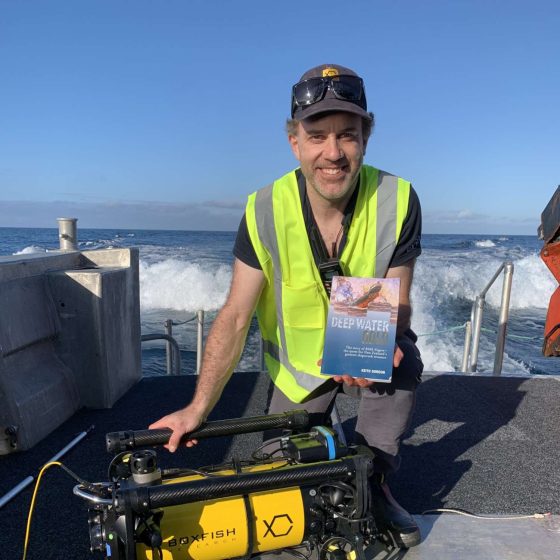
Purchasing an ROV is an investment for your business, and like all investments, it requires careful research and consideration.
This guide will provide you with all the information you need to choose the best ROV to meet your needs. We’ll outline the seven key elements to consider when making your decision. We also explore the differences between ROV types and how they can be tailored to meet specific mission requirements.
A Remotely Operated Vehicle (ROV), also called an underwater drone, is a submersible robotic vehicle equipped with a camera for observation. It is connected to the surface via a cable, which carries control signals data, and is controlled in real-time by a human operator using the ROV control panel.
Various industries use ROVs to perform underwater tasks, including exploration, filming, asset inspection and research. They can be equipped with grabbers and other accessories to perform maintenance, recovery and monitoring.
Using an ROV can make underwater missions easier, safer, and more cost-efficient by addressing several factors that limit scuba divers: time spent underwater, maximum depth and water temperature.
ROVs come in many sizes, from as small as a rugby ball to as large as a motorcar. Their design, weight, power, and functionality vary according to manufacturer and purpose. However, generally, they can be divided into three categories according to their size:
Large, powerful work-class ROVs are typically used for heavy-duty construction projects at depths of 3,000 metres (10,000 feet). In contrast, observation- or inspection-class and mini ROVs are lighter, more compact underwater ‘flying eyes’. These smaller, remotely operated vehicles typically work at depths of up to 1,000 metres (3280 feet).
We recommend considering seven key elements to choose the best ROV for your industry or project.
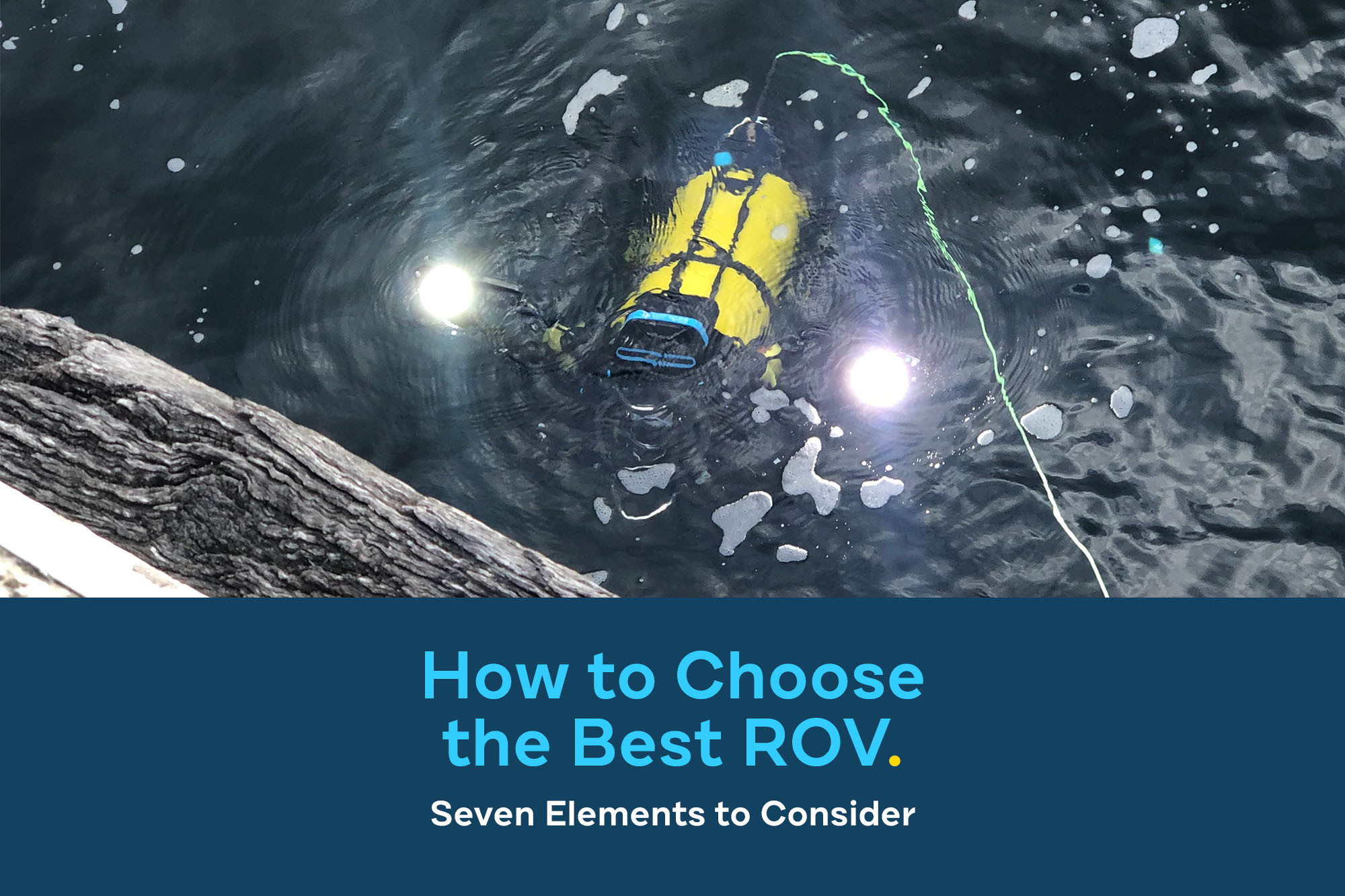
The type of ROV you choose should consider the mode of deployment and the task you need the vehicle to perform. For example, using an ROV for a deep-sea search and recovery mission will require a different solution to potable water inspections. With the latter, choosing a portable, compact ROV may take priority over depth rating.
You also need to consider the ROV’s payload capabilities. Can the vehicle support the add-ons and environmental sensors required to carry out regular industry tasks, such as sonar, navigation systems and grabbers?
Boxfish ROVs are lightweight, portable and easy to deploy with a crew of two from virtually any small boat. At the same time, the vehicles are stable and extremely powerful, able to navigate strong currents in challenging underwater conditions.
We offer three vehicle models designed and customisable to meet varied modes of deployment:
Users can select from a wide range of sensors and accessories to upgrade their Boxfish ROV, including multibeam imaging sonar, grabber, USBL, laser scaler and rotary cleaning brush.
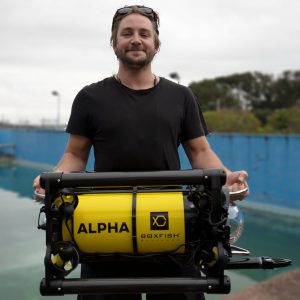
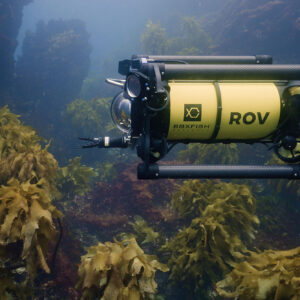
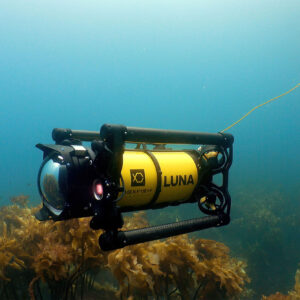
Underwater ROVs use one of two types of power sources – surface power or onboard battery.
Surface-powered ROVs receive power via the vehicle tether. This type of ROV may be preferable for projects requiring a long, sustained period of submersion. On the downside, they use a larger diameter tether to support electrical power and data transfer, which increases drag and decreases cable flexibility.
A battery-powered model may be the best choice if you need a highly manoeuvrable, lightweight ROV. Boxfish ROVs have high-capacity, fast-charge batteries that can be fully recharged in about 1 hour using a fast charger or 5-6 hours (depending on the model) using the standard overnight charger. Quick access sealed ports mean the ROV can also be charged quickly and easily in the field.
ROVs come in various forms and shapes according to their function, hydrodynamic design, and aesthetics. However, they share a rigid frame structure onto which the motor, thrusters, camera, lights and other ROV components are mounted.
ROV thrusters combine a propeller with a motor to push the vehicle through the water. This propulsion system commonly uses four, six or eight thrusters to allow movement in multiple directions.
At least six thrusters are necessary to support a six-degree-of-freedom of movement, which is the capacity of ROVs to move freely in three-dimensional space across all axes. A vectored thruster configuration also gives improved manoeuvrability and enhances ROV altitude control.
Boxfish ROVs have eight thrusters in a vector layout, which offers true six degrees of freedom of movement, allowing the vehicle to travel and orient in any direction.
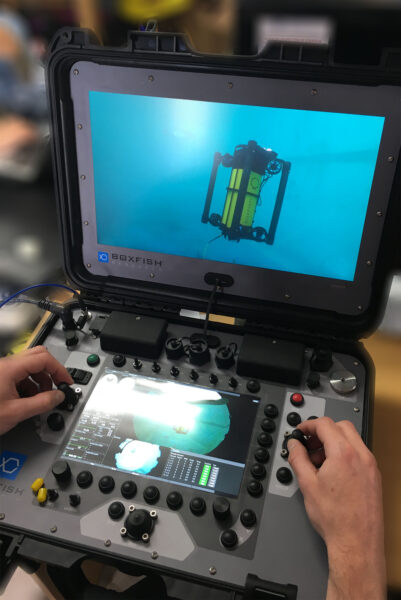
Radio waves cannot travel far through water, so using wireless technology to operate an ROV is impossible. Therefore, most ROVs are tethered to the surface control station by cabling. The ROV tether transmits electrical power (optional), video and communication data using fiber optic technology or traditional copper wiring.
Fiber optic technology, which transmits data using pulses of light travelling through plastic or glass fiber, has several advantages over copper cabling. It has higher data transfer speeds, higher bandwidth, and lower latency. Unlike copper, fiber optic technology is not subject to interference by electromagnetic and radio frequencies.
Fiber optic tethers are also lighter and thinner, thus reducing drag. They are also not subject to work hardening and galvanic corrosion that causes failures in copper tether due to use and damage to the jacket.
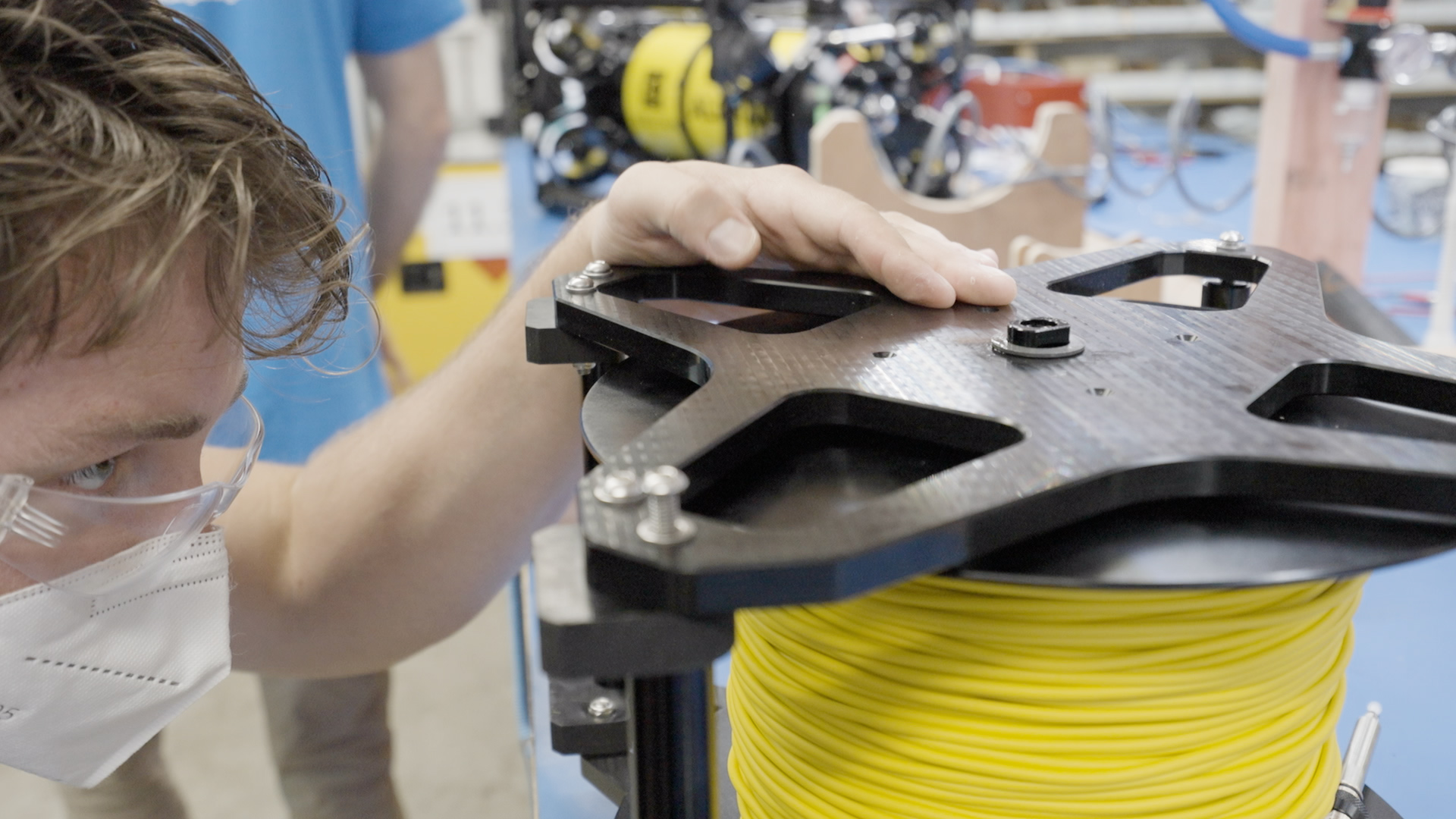
Boxfish ROVs use an exceptionally durable fiber-optic tether coated in Kevlar for protection. It is ultra-lightweight and neutrally buoyant in salt water. The tether transmits 10GB of data per second, delivering uncompressed 4K video on the surface with near-zero latency.
The quality of an ROV’s underwater vision system significantly affects the ability of an operator to navigate the environment and capture tack-sharp video and photos.
Underwater ROVs have a main forward-facing camera supplying visual information to the operator for vehicle control. They may also have one or more secondary cameras facing rearward to improve situational awareness.
The ROV’s primary camera will be at least High-Definition (HD) and able to perform well in low-light conditions. However, the technical specifications of ROV cameras — such as sensor size, lens quality and zoom range — vary between manufacturers and models.
Some tasks and industries also require higher-quality imagery — for example, underwater filmmaking, photogrammetry, and scientific surveys. Our ROVs have different cameras, system configurations and image capabilities according to their primary function.
Our observation-inspection class vehicles, Boxfish Alpha and Boxfish ROV deliver up to 4K uncompressed live video monitoring and surface recording, 20MP photo mode, and 6x true 4K zoom. However, being designed for expeditions at depths of up to 1,000 metres, Boxfish ROV has two secondary ultra-wide-angle navigation cameras rather than just the single secondary camera on the Alpha.
Our underwater drone for professional cinematography, the Boxfish Luna, also has one primary and two auxiliary cameras. However, the main camera is a Sony ⍺1 or Sony A7SIII full-frame mirrorless delivering up to 8K 30p and 4K 30p/60p/120p 10-bit/raw internal video recording (Sony ⍺1).
When choosing an ROV, you must consider future use and how your requirements may change over time. Some ROV platforms are restricted by their design with a limited number of upgrades. Whereas other ROV manufacturers, like Boxfish Robotics, allow clients to modify the base unit to create a custom technology solution.
Boxfish customers can choose the model that best suits their needs in terms of depth rating, power endurance, tether, surface control station and image capabilities. They can upgrade their selected ROV by adding sensors and accessories and increasing the tether length.
The number of accessories you can add depends on your chosen ROV model. Boxfish Alpha accommodates up to three sensors and accessories, while Boxfish ROV and Boxfish Luna can be upgraded with up to eight add-ons.
Our remotely operated vehicles are also autonomous-capable, meaning customers may upgrade to a hybrid ROV/AUV in the future.
The Boxfish Luna also offers interchangeable lenses and an interchangeable camera payload that makes changing lenses, upgrading to the latest camera, or switching cameras in the field easy.
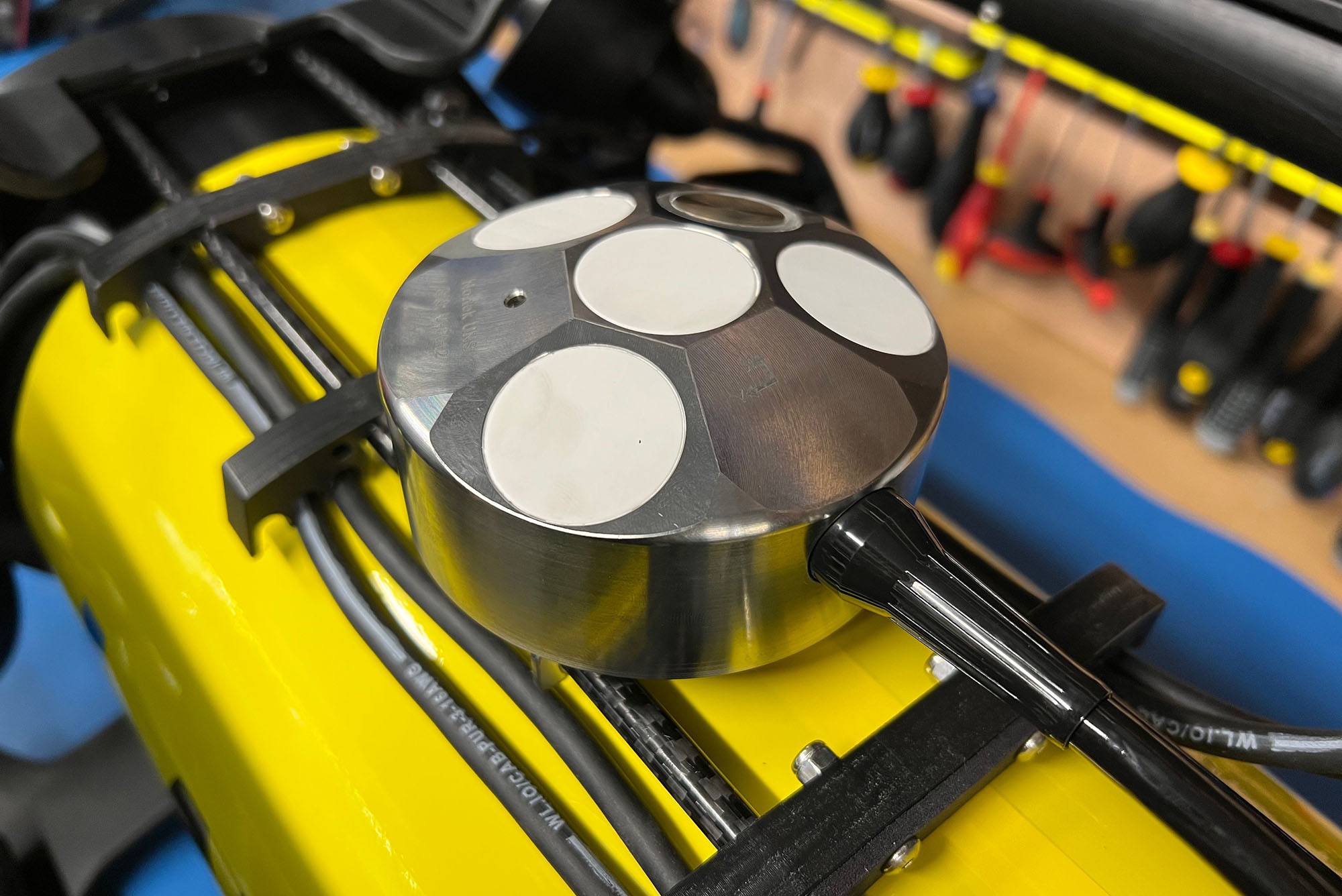
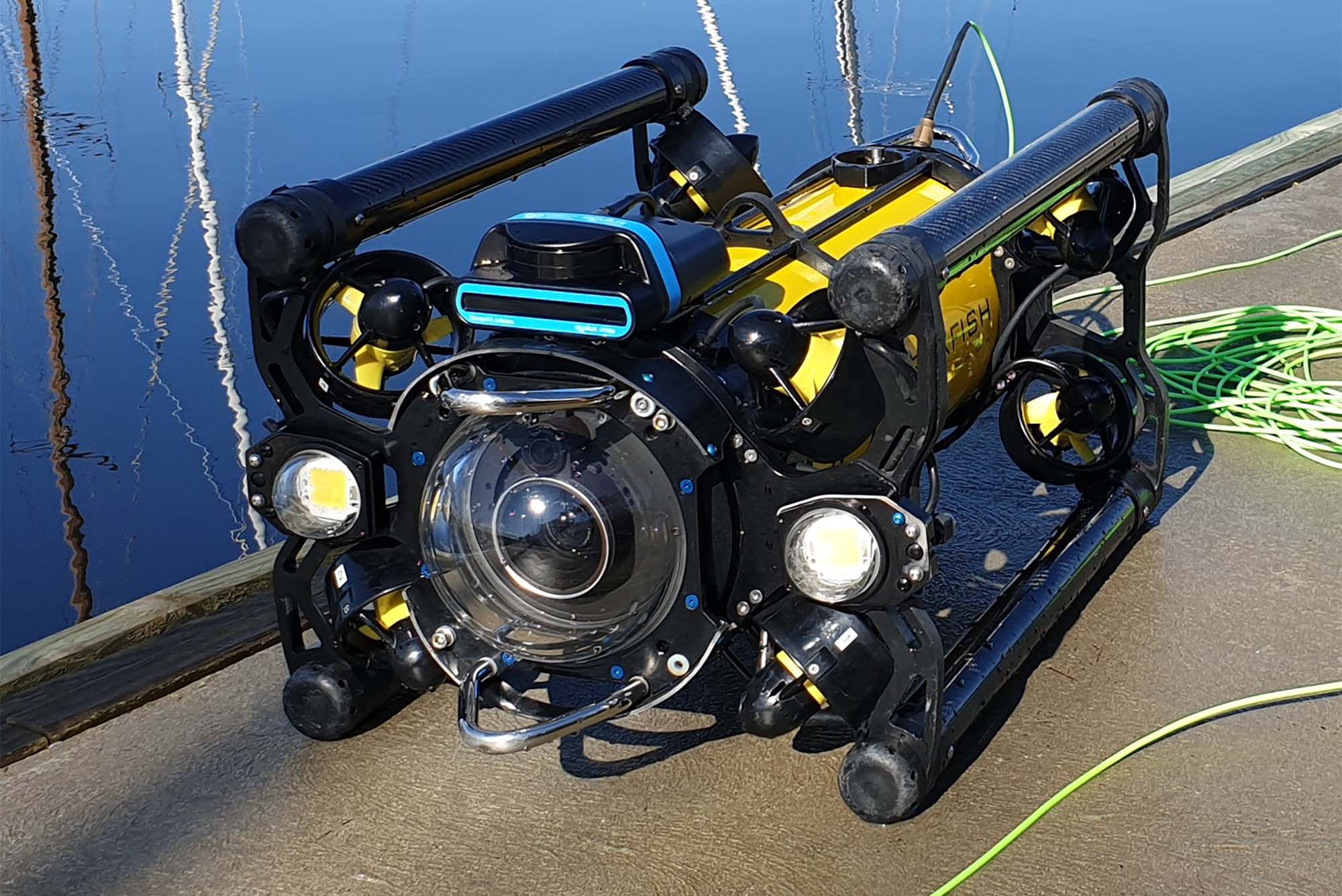
Vehicle design and useability affect the training required by ROV operators for deployment and maintenance. Some models or modes of development, such as offshore industries, may require intensive pilot training in advanced ROV operations, safety, and ROV maintenance.
Other remotely operated vehicles, like the Boxfish ROV platform, are designed to be intuitive, easy to use and require minimal maintenance. We can prepare our customers to manage a Boxfish ROV with only two training days. Learning advanced underwater vehicle servicing and maintenance takes only a day.
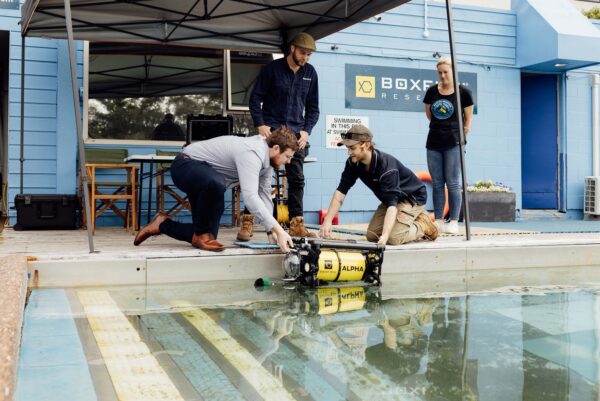
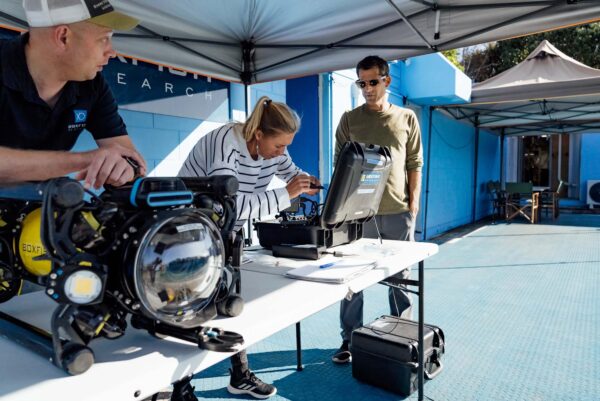
If you plan to deploy your ROV in remote locations and want to minimise downtime, ease of serviceability is critical. Our Boxfish ROVs have a rugged, fault-tolerant design allowing them to run with several fouled thrusters. The operator can quickly repair the vehicle with only basic tools if a thruster or light requires replacement.
Whether your industry is commercial diving, offshore energy, biosecurity and SAR, marine science, cinematography, aquaculture, or luxury superyacht, we have an underwater vision solution to meet your needs.
Boxfish Robotics is a New Zealand manufacturer of submersible robotics systems – ROVs, autonomous capable and resident vehicles. Boxfish ROVs are versatile, robust, and capable. The vehicles are highly agile and actively stabilised, allowing users to collect super smooth, clear imagery and sensor data. Customers find ROV operation easy and intuitive because of our user-friendly design and pilot assist functionality.
Visit our product comparison page to learn more about our ROVs and which model best fits your project requirements.
RMS Niagara and its Story The tragic tale of the RMS Niagara dates back 84 years, when the trans-Pacific liner met its fate near New Zealand’s Bream Head. On June…

The 2024 Hi-Tech Awards saw an unprecedented number of entries from a diverse range of technology sectors across New Zealand. David Downs, Chair of the Hi-Tech Trust, emphasized the growing…
